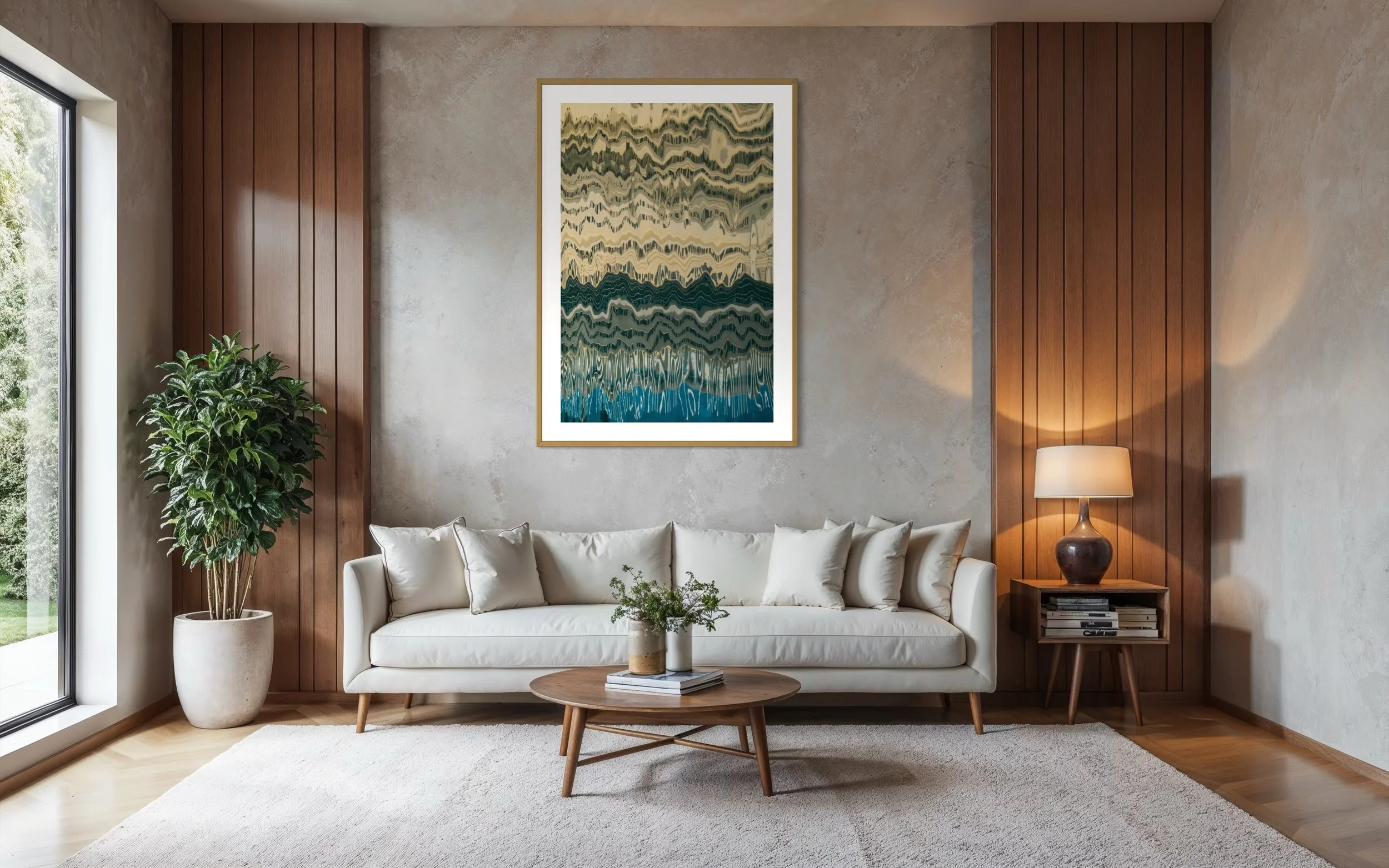Desert Movement 4 – Water, Memory, and the Desert’s Golden Artistry
“I journeyed through the desert not to cross sand, but to uncover the self." — Ralph Kerle, inspired by the spirit of Al-Mutanabbi
With the arrival of Desert Movement 4, the Gold in the Desert Collection takes on a new layer of meaning. Captured in the Dubai Marina, this work transforms architecture into fluid bands of gold, cream, and teal—rippling strata of heritage, commerce, and memory.
My practice has long been grounded in the belief that reflections are more than optical phenomena. In the right context, they reveal the cultural undercurrents of a place—its unspoken narratives, aspirations, and contradictions. In this way, Desert Movement 4 becomes part of a psychogeographic map, where the city itself performs in the theatre of its own waterways.
This relationship between water and abstraction is deeply rooted in Arabic culture, most notably in the art of Ebru. Ebru, which flourished in the Ottoman Empire but has even earlier origins in Central Asia, is the process of floating pigments on the surface of water to create intricate, unrepeatable designs. The image is then transferred onto paper, silk, or other surfaces, capturing a moment of movement forever.
Historically, Ebru held both practical and spiritual significance. In Islamic decorative arts, where figural representation was often avoided, Ebru offered a way to create beauty through pure abstraction—patterns shaped by the natural flow of water and guided by the artist’s hand. The unpredictability of the process echoed the philosophical belief that divine beauty exists in the balance between order and chaos.
By the 17th century, Ebru travelled along trade routes into Europe, where it became known as paper marbling. Western artisans embraced it for bookbinding, calligraphy, and decorative papers, often marvelling at its exotic origins, though rarely acknowledging the depth of its cultural lineage.In Desert Movement 4, these traditions surface again—not through pigment and comb, but through the reflective skin of the Dubai Marina. Here, the city becomes the Ebru bath, with architecture, light, and tide painting their own patterns. The work is both contemporary and ancient, modern abstraction layered upon centuries of decorative tradition.
As with all pieces in the Gold in the Desert Collection, Desert Movement 4 invites you to look beyond the surface, to see how the water remembers—and how memory itself ripples through the meeting of desert and sea.



